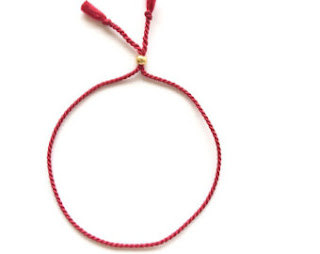 The Gemara (Rosh HaShana 31b) tells that in Temple times a red string was always hung outside the Bais HaMikdosh on Yom Kippur. When the scapegoat was hurled off a cliff many miles away the
The Gemara (Rosh HaShana 31b) tells that in Temple times a red string was always hung outside the Bais HaMikdosh on Yom Kippur. When the scapegoat was hurled off a cliff many miles away the string would turn white if Hashem had forgiven all sins; and the people were happy. However, if it didn't turn white it was a sign that Hashem had not forgiven them; and the people would become depressed.
Beginning 40 years prior to the destruction of the Second Bais Hamikdosh the string never again turned white. The Sages, seeing how negatively the people were affected, took measures to hide the string so that people would be unaware that it had remained red. One could perhaps argue that it was better if they had known it remained red. They would be aware of God's displeasure with them and it might inspire them to improve their ways. But that was not how the Sages saw it. They felt that the effects of feeling down were so bad, that it outweighed the possible benefits that might arise out of their awareness of God's disappointment.
How many times do we find ourselves in a situation where we see someone acting in a manner that we know without question needs to be corrected, and we take it upon ourselves to rebuke them. We might even be in a situation where we feel that is our responsibility. Perhaps a parent, a teacher, or a rabbi. We must learn from here that one is treading on very dangerous territory. If the rebuke will lead to the person feeling despondent and depressed, then it is the rebuker who needs to be chastised. Whatever possible gain there might be from the rebuke is greatly outweighed by the damage caused to the one receiving it feeling like giving up.
No comments:
Post a Comment